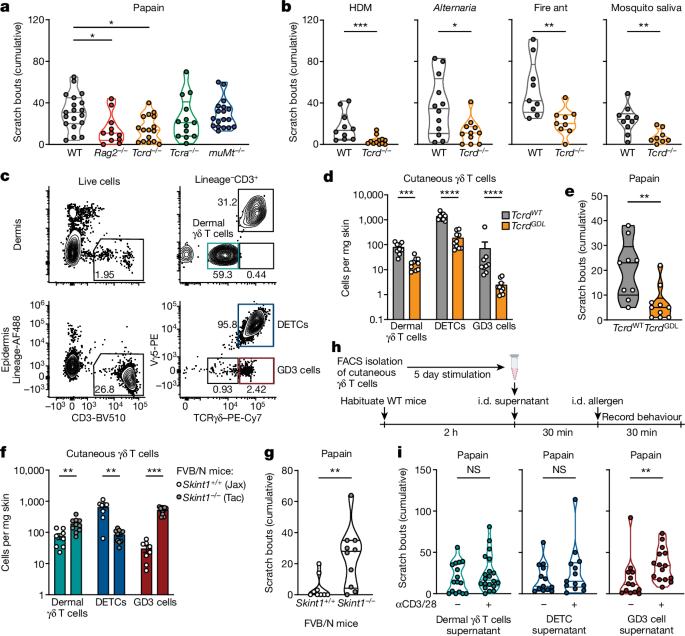Uncovering the Immune-Neuronal Axis Controlling Allergic Responses: A γδ T Cell–IL-3 Signaling Pathway Regulates Sensory Neuron Activation by Allergens
The article explores the bidirectional neuroimmune circuits that drive allergic responses, focusing on how immune cells regulate the sensitivity of sensory neurons to allergens in the naive state. The key findings are:
-
A specific subset of epidermal γδ T cells, termed GD3 cells, produces the cytokine IL-3 and promotes allergic itch and the initiation of the allergic immune response.
-
IL-3 acts on sensory neurons expressing the IL-3 receptor (Il3ra) in a JAK2-dependent manner, lowering their threshold for activation by allergens without directly eliciting itch.
-
The γδ T cell-IL-3 signaling axis further acts through the STAT5 pathway to promote neuropeptide production and the initiation of allergic immunity.
-
This immune-neuronal regulatory pathway may explain individual differences in allergic susceptibility and offers new therapeutic avenues for treating allergic diseases.
Personalizar Resumo
Reescrever com IA
Gerar Citações
Traduzir Fonte
Para outro idioma
Gerar Mapa Mental
do conteúdo fonte
Visitar Fonte
www.nature.com
A γδ T cell–IL-3 axis controls allergic responses through sensory neurons - Nature
Principais Insights Extraídos De
by Cameron H. F... às www.nature.com 09-04-2024
https://www.nature.com/articles/s41586-024-07869-0
Perguntas Mais Profundas
